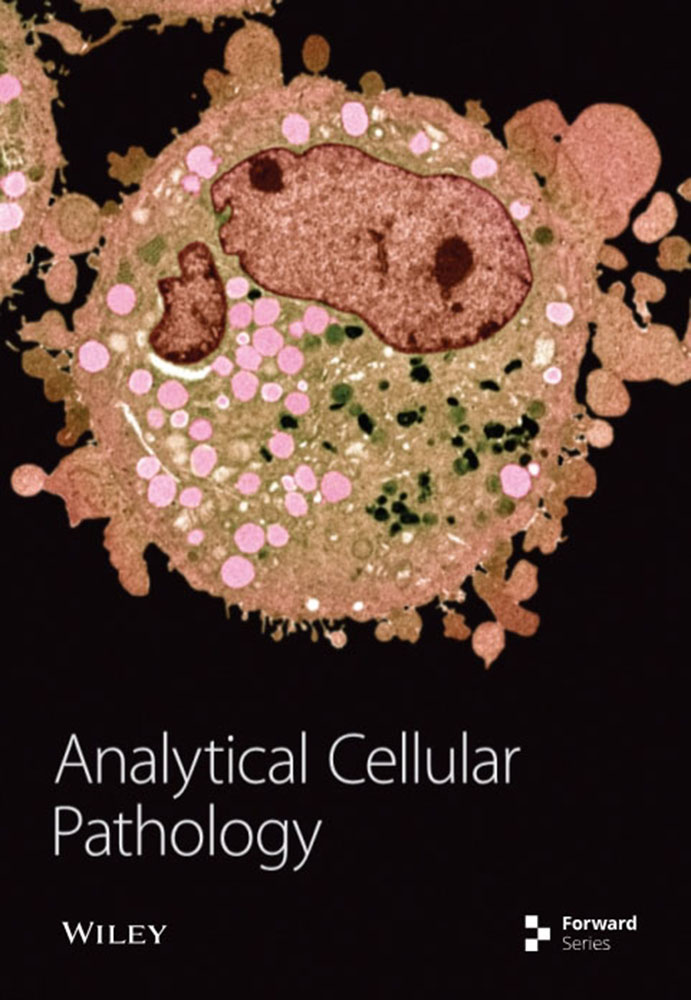Intraoperative Touch Imprint Cytology of Brain Neoplasms: A Useful High-Diagnostic Tool in 93 Consecutive Cases; Differential Diagnoses, Pitfalls, and Traps
IF 2.7
4区 医学
Q3 CELL BIOLOGY
引用次数: 0
Abstract
Introduction. Intraoperative cytological examination of central nervous system (CNS) lesions was first introduced in 1920 by Eisenhardt and Cushing for rapid evaluation of neurosurgical specimens and to guide surgical treatment. It is recognized that this method not only confirms the adequacy of biopsy in CNS samples but also indicates the presence and preliminary diagnosis of lesional tissue. Methods. A total of 93 patients who underwent touch imprint cytology (TIC) for CNS tumors or lesions between 2018 and 2023 were included in the study. All cases were correlated with the final histopathological diagnosis, and pitfalls and difficulties encountered with discrepancies were noted. Result. The most common primary CNS tumors were gliomas and meningiomas, while secondary (metastatic) tumors were predominantly lung, breast, and gastrointestinal system carcinomas. Sensitivity, specificity, positive predictive value, and negative predictive value for diagnosis with TIC were 94.1%, 100%, and 61.5%, respectively. Final histopathological diagnosis by TIC was made in 88 cases (94.6%) and the discrepancy was found in 5 cases (5.37%). Three of the five discrepancies (3.2%) were haematolymphoid malignancies (two lymphomas and one plasma cell neoplasia), one glioblastoma, and one hemangioblastoma case. Conclusion. TIC is a fast, safe, and inexpensive diagnostic tool used during intraoperative neuropathology consultation. Awareness of the pitfalls of using this method during intraoperative consultation will enable high-diagnostic accuracy.脑肿瘤术中触摸印迹细胞学:93 例连续病例中有用的高度诊断工具;鉴别诊断、陷阱和陷阱
导言。中枢神经系统(CNS)病变的术中细胞学检查由艾森哈特和库欣于 1920 年首次引入,用于快速评估神经外科标本并指导手术治疗。人们认识到,这种方法不仅能确认中枢神经系统样本活检的充分性,还能显示病变组织的存在和初步诊断。方法。研究共纳入2018年至2023年期间因中枢神经系统肿瘤或病变而接受触摸印迹细胞学(TIC)检查的93例患者。所有病例均与最终组织病理学诊断相关联,并指出存在差异的误区和遇到的困难。结果。最常见的原发性中枢神经系统肿瘤是胶质瘤和脑膜瘤,继发性(转移性)肿瘤主要是肺癌、乳腺癌和胃肠系统癌。TIC诊断的敏感性、特异性、阳性预测值和阴性预测值分别为94.1%、100%和61.5%。有 88 例(94.6%)通过 TIC 进行了最终组织病理学诊断,有 5 例(5.37%)存在差异。五例诊断不一致的病例中,三例(3.2%)为血淋巴样恶性肿瘤(两例淋巴瘤和一例浆细胞瘤),一例胶质母细胞瘤,一例血管母细胞瘤。结论TIC 是一种快速、安全、廉价的诊断工具,可用于术中神经病理会诊。认识到术中会诊时使用这种方法的误区将有助于提高诊断的准确性。
本文章由计算机程序翻译,如有差异,请以英文原文为准。
求助全文
约1分钟内获得全文
求助全文
来源期刊

Analytical Cellular Pathology
ONCOLOGY-CELL BIOLOGY
CiteScore
4.90
自引率
3.10%
发文量
70
审稿时长
16 weeks
期刊介绍:
Analytical Cellular Pathology is a peer-reviewed, Open Access journal that provides a forum for scientists, medical practitioners and pathologists working in the area of cellular pathology. The journal publishes original research articles, review articles, and clinical studies related to cytology, carcinogenesis, cell receptors, biomarkers, diagnostic pathology, immunopathology, and hematology.
 求助内容:
求助内容: 应助结果提醒方式:
应助结果提醒方式:


